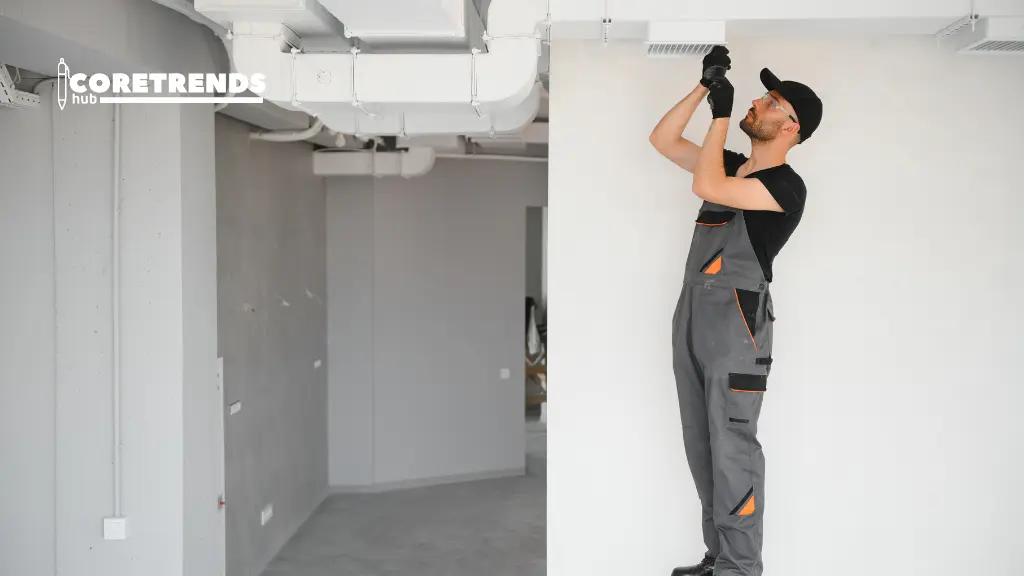A new HVAC system may be needed when your current system is old, inefficient, or frequently breaking down. Over time, heating and cooling units lose their effectiveness. This can lead to uneven temperatures, higher energy bills, and uncomfortable living conditions. Upgrading to a new system can improve comfort, reduce energy costs, and prevent unexpected repairs. It also ensures your home stays safe, as older systems may have worn-out parts or potential safety issues.
The cost factor is important to consider. Installing a new HVAC system can be expensive, depending on the size of your home and the type of system you choose. Besides the unit itself, installation and maintenance costs add up. Financing options can help manage these costs by spreading payments over time. Planning your budget carefully ensures you can afford a system that meets your home’s needs without financial stress.
Table of Contents
What Is HVAC Financing
HVAC financing is a way to pay for a new heating, ventilation, and air conditioning system over time. Instead of paying the full cost upfront, homeowners can spread the payments into smaller, manageable monthly installments. This makes it easier to afford a new system without putting too much strain on your budget.
Financing can come from banks, credit unions, or even the HVAC company itself. Each lender may offer different plans, interest rates, and repayment terms. Some plans may have low or even zero percent interest for a limited period, which can save money if managed carefully.
Using HVAC financing allows you to get a new system immediately. You don’t have to wait to save the full amount before replacing an old or failing system. This can prevent unexpected breakdowns and keep your home comfortable year-round.
Benefits of Financing a New HVAC System
Manageable Monthly Payments
Financing lets you break the total cost of a new HVAC system into smaller monthly payments. This makes it easier to afford a high-quality system without affecting your day-to-day budget. You can choose a plan that fits your financial situation, making it less stressful to invest in home comfort.
Immediate Access to a New System
With financing, you don’t have to wait to save enough money for a full payment. You can replace an old or malfunctioning HVAC unit immediately. This keeps your home comfortable year-round and avoids sudden breakdowns that can be expensive and inconvenient.
Improved Energy Efficiency
New HVAC systems are designed to use energy more efficiently. Upgrading early not only improves comfort but also reduces your monthly energy bills. Financing allows you to enjoy these savings sooner rather than waiting for your old system to fail completely.
Flexible Terms and Low-Interest Options
Many financing plans come with flexible repayment schedules and low or even zero-interest rates for a limited time. This gives you control over how quickly you pay off your system while keeping costs predictable and manageable. It makes investing in a reliable HVAC system simpler and more affordable.
Types of HVAC Financing Options
There are several ways to finance a new HVAC system. Each option has its own benefits, so choosing the right one depends on your budget and financial situation.
Personal Loans
Personal loans are offered by banks, credit unions, or online lenders. They provide a fixed amount of money that you repay in monthly installments over a set period. Interest rates vary based on your credit score, but personal loans are a simple way to finance a system without using your home as collateral.
Home Equity Loans or Lines of Credit
If you have equity in your home, you can use it to finance an HVAC system. Home equity loans give a lump sum with fixed payments, while lines of credit allow flexible borrowing as needed. These options may have lower interest rates than personal loans, but your home is used as security.
Manufacturer or Dealer Financing
Many HVAC manufacturers and dealers offer financing directly. These plans often include promotional rates, like low or zero percent interest for a limited time. This option can make monthly payments more affordable and the approval process faster.
Credit Cards
Using a credit card is another option, especially for smaller HVAC projects or emergency repairs. Some cards offer promotional zero-interest periods, but it’s important to pay off the balance before interest applies, or costs can increase quickly.
How to Qualify for HVAC Financing
Qualifying for HVAC financing depends on several key factors. Lenders want to ensure you can repay the loan before approving your application.
- Credit Score Requirements: Most lenders check your credit score to determine your eligibility. A higher score usually means better interest rates and loan terms. Even if your score is lower, some lenders may still offer financing but at higher rates.
- Income and Employment Verification: Lenders often require proof of steady income and employment. This shows that you have the financial means to make monthly payments. Providing recent pay stubs or tax documents can help speed up the approval process.
- Other Factors Lenders Consider: Lenders may also look at your existing debt, monthly expenses, and overall financial stability. Some HVAC companies offer flexible financing options for those with less-than-perfect credit, so exploring multiple options can improve your chances of approval.
Interest Rates and Terms to Consider
When financing a new HVAC system, it’s important to carefully review interest rates and loan terms.
Fixed vs. Variable Rates
Fixed rates stay the same for the entire loan term, which means your monthly payments are predictable and easy to budget. Variable rates can change over time, often starting lower than fixed rates. However, if interest rates rise, your payments may increase, which can affect your budget. Choosing between fixed and variable rates depends on how comfortable you are with potential changes and long-term planning.
Loan Terms and Repayment Periods
HVAC financing terms can range from short-term plans of a few months to long-term plans of several years. Longer terms reduce monthly payments, making them easier to manage, but they usually increase the total interest paid. Shorter terms lower total interest costs but require higher monthly payments. Evaluating your income and expenses helps select the right term for your situation.
Hidden Fees to Watch
Some financing plans may include hidden costs, such as origination fees, late payment penalties, or prepayment charges. These fees can add up and increase the total cost of your system. Carefully reading all loan documents and asking questions about potential fees ensures you understand the full financial commitment before signing.
Alternatives to Financing
If financing a new HVAC system is not the best option, there are several alternatives to consider.
- Saving Up for Cash Payment: One simple option is to save money over time and pay for the system in full. This avoids interest charges and loan fees. It may take longer to get a new system, but it can be the most cost-effective option in the long run.
- Energy-Efficient Rebates or Incentives: Many local governments, utility companies, or manufacturers offer rebates and incentives for installing energy-efficient HVAC systems. These programs can reduce the upfront cost significantly, making a cash payment or smaller financing plan easier to manage.
- Government or Utility Assistance Programs: Some households may qualify for government or utility assistance programs designed to help with home energy improvements. These programs can provide grants, low-interest loans, or other financial support for upgrading HVAC systems, especially for low-income or elderly homeowners.
- Using Existing Savings or Investments: Another alternative is using personal savings or investment funds to cover the cost. While this may reduce liquid assets temporarily, it avoids debt and interest payments. This method works well for those with sufficient savings who want to minimize additional financial obligations.
Conclusion
Financing a new HVAC system is a practical option for many homeowners. It lets you get a reliable system immediately without paying the full cost upfront. Monthly payments, flexible terms, and low-interest plans make it easier to manage your budget while keeping your home comfortable.
Before choosing financing, consider your credit, income, and the total cost, including interest and fees. Compare different options to find the best fit. If financing isn’t right, alternatives like saving, rebates, or assistance programs can help. Making an informed decision ensures you get a system that meets your needs without financial stress.



